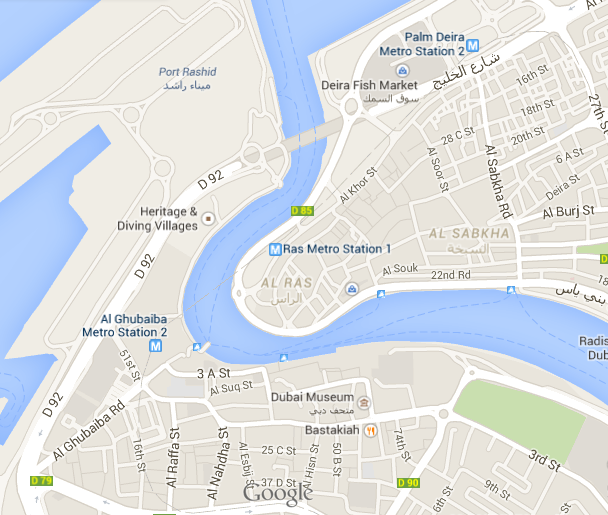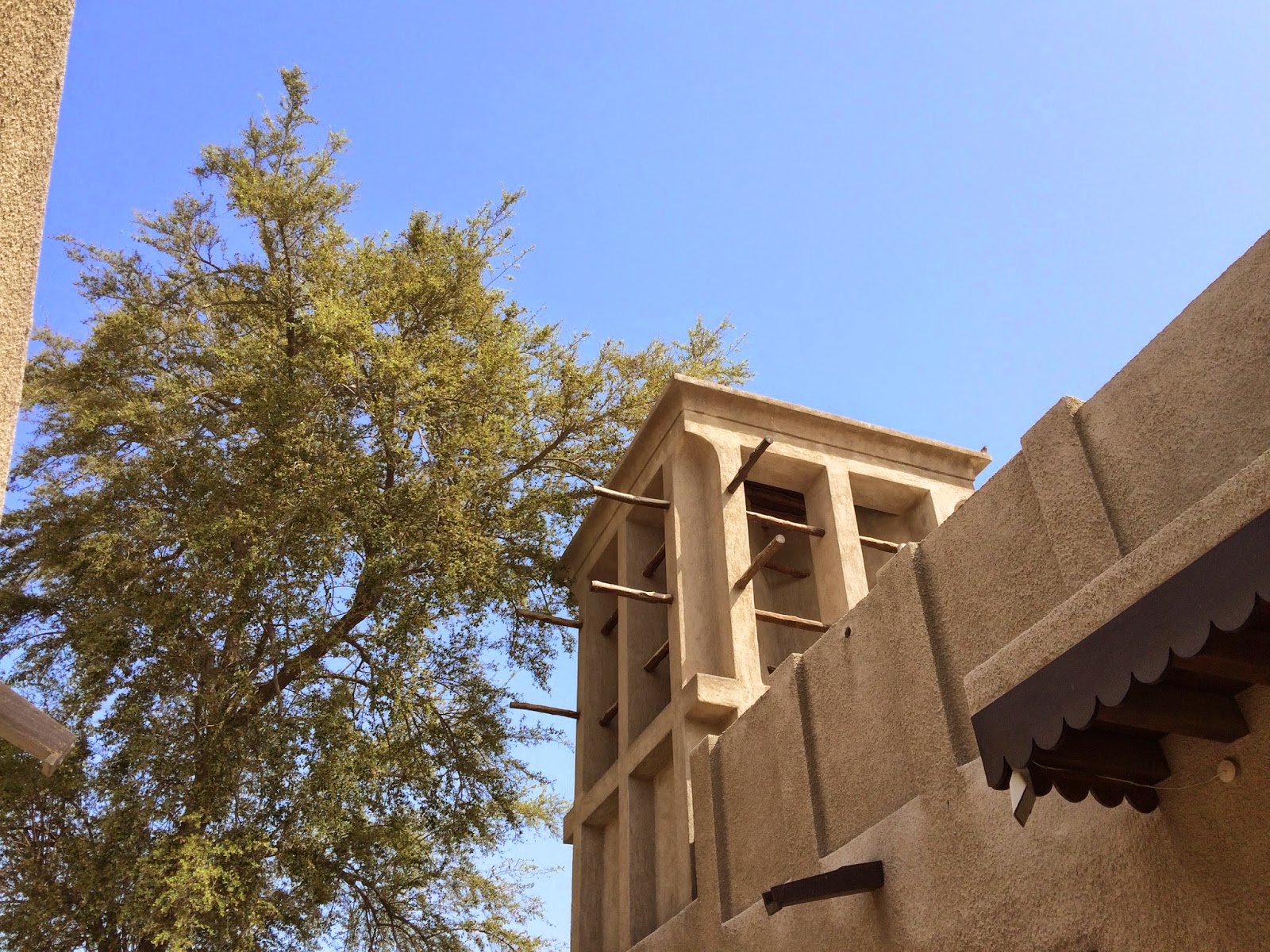Old Dubai: the pearl of a new city
When one thinks of Dubai, most people tend to think of indoor ski slopes (just one in reality), Maserati police cars (again, just one in reality), and a sea of soaring skyscrapers that have sprung up over city in the course of a few decades. While some of these images do indeed issue from truth, their exaggerated representation of the city also occludes other aspects of the city from making themselves known. One such example is the existence of an Old Dubai--the old port and fishing village that surounds the mouth of the Dubai Creek (Khor Dubai) that flows into the Arabian Gulf.
These neighborhoods are known as Bur Dubai on the left bank, and Deira on the right. For centuries, before the discovery of oil, the main source of income for many families in the region was the pearl industry. Archaeological excavations have produced artifacts that suggest that pearl harvesting has taken place in the area for at least 7,000 years. Men from all over the region would leave their families, sometimes for months at a time, to participate in pearl-diving activities to supplement their family's income when they weren't tending to their date garden or herding camel. It also was not uncommon for other men to work full-time as pearl divers; these individuals would travel as far as Sri Lanka to continue diving after the season in the Arabian gulf had ended.
Despite the difficult nature of this work--one would have to old one's breath for sometimes two minutes at a time, and do dozens of dives from sunrise to sunset, safe for a few breaks for prayers and a midday meal--not just anyone could become a pearl diver. This industry and its methods have always been revered by the region's leaders, and the practice itself is a rich part of Emirati culture, complete with its own traditions and hierarchy. Foreigners, for example, could not become pearl divers and, after the advent of modern diving equipment, such technological advances were forbidden from use even after the demise of the pearl industry.
While most divers made little money participating in this activity (and at that they were typically only paid at the end of the season, splitting the profits of their collective dives with every member of the crew), those who owned boats or who were merchants did indeed make money. This would allow them to construct houses around the Creek (mostly in the Bur Dubai area), which is where the Bani Yas tribe had settled in the 19th century. A small village then organically developed in this area, complete with a market place, a fortress (the Al Fahidi fort, which now houses the Dubai museum) and a number of traditional houses.
A walk around the Al Fahidi neighborhood of old Dubai will bring you through a quagmire of little streets organized around traditional courtyard houses with the traditional wind towers that kept these dwellings cool during the unbearably hot summer months. Most of the wealth, and thus infrastructure and architecture present, exists thanks to the pearl. I could try to poetically describe to you some of my favorite sights, but I'd rather let you see for yourself. Here is a selection of photos from a walk I took there the other day:
 |
| Dubai from afar...you can't see the Burj Khalifa, but you can see notable landmarks like the Palm and the World |
Zooming in just a little, the boxed-off area represents Old Dubai
...and finally, Old Dubai surrounding the Creek.
These neighborhoods are known as Bur Dubai on the left bank, and Deira on the right. For centuries, before the discovery of oil, the main source of income for many families in the region was the pearl industry. Archaeological excavations have produced artifacts that suggest that pearl harvesting has taken place in the area for at least 7,000 years. Men from all over the region would leave their families, sometimes for months at a time, to participate in pearl-diving activities to supplement their family's income when they weren't tending to their date garden or herding camel. It also was not uncommon for other men to work full-time as pearl divers; these individuals would travel as far as Sri Lanka to continue diving after the season in the Arabian gulf had ended.
Despite the difficult nature of this work--one would have to old one's breath for sometimes two minutes at a time, and do dozens of dives from sunrise to sunset, safe for a few breaks for prayers and a midday meal--not just anyone could become a pearl diver. This industry and its methods have always been revered by the region's leaders, and the practice itself is a rich part of Emirati culture, complete with its own traditions and hierarchy. Foreigners, for example, could not become pearl divers and, after the advent of modern diving equipment, such technological advances were forbidden from use even after the demise of the pearl industry.
While most divers made little money participating in this activity (and at that they were typically only paid at the end of the season, splitting the profits of their collective dives with every member of the crew), those who owned boats or who were merchants did indeed make money. This would allow them to construct houses around the Creek (mostly in the Bur Dubai area), which is where the Bani Yas tribe had settled in the 19th century. A small village then organically developed in this area, complete with a market place, a fortress (the Al Fahidi fort, which now houses the Dubai museum) and a number of traditional houses.
 |
| Tower of the Al Fahidi Fort, constructed in 1781 |
A view of the traditional wind towers that define the houses of this region
The interior of a wind tower--the X design funnels even the slightest breeze down into the interior of the house
Closely aligned structures whose rain spouts--yes, even in Dubai--and cantilever beams reach out to each other
An unusually ornate door leading to an outer courtyard
In a second courtyard in the same house, I stumbled upon this tree.
Notice the hanging rocks that hang from it--they are weights that pearl divers would tie onto themselves in order to
make themselves heavier and thus descend more quickly to the pearl beds below.
Ramparts of the wall surrounding the former Dubai fishing village
Crossing the creek, which even to this day happens most easily in an Abra (a canopied wooden water taxi), one enters the other district that makes up the older part of this bustling metropolis: the Deira. This neighborhood was, and again still is, far less residential as it hosts a number of souks (bazaars or markets) for products such as gold, spices, fabric, perfume, fish, among other items. Each product has its own dedicated market where you get bombarded by men and women alike swearing to sell you the most beautiful, authentic, delicious, or whatever other superlative product in the souk. Again, rather than trying to wax poetic about the spectacle for the senses that one experiences in wandering this quarter, here is a preview of what there is to see:
Different views of the banks of the Dubai Creek
An abra water taxi Larger dhows used for transporting heavy goods and merchandise
A variety of smells and flavors from the spice Souk
Views from the streets of Deira
And finally, the furthest away from the heart of the Deira, the fish market. Luckily for you, smells don't translate well in binary code.
These pictures really don't do justice to demonstrate truly how different these neighborhoods are from the rest of the city. I wouldn't say it feels like stepping back into a more familiar reality, because these areas, like parts of newer Dubai (read: those metal and glass sky-scrapers blinged out with marble interiors and Swarovski crystal chandeliers) also feel foreign to me, but there is something comforting about the more historical nature of these districts.




























No comments:
Post a Comment